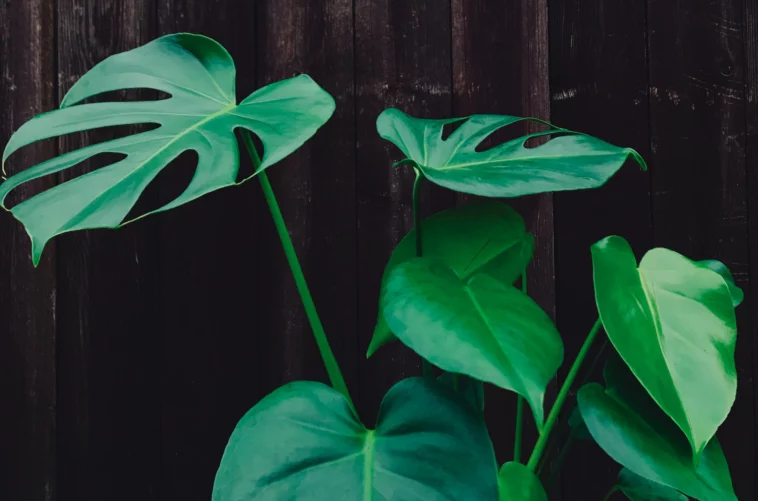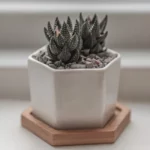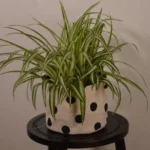Table of Contents
How to Care for Monstera Variegata?
Monstera Variegata is a tropical vining plant that is native to Panama, Mexico, and other tropical regions. This plant can grow up to about nine meters in height.
It is often called Swiss cheese due to the leaves that grow on the plant.
What Does Your Monstera Variegata Require?
Light Requirements?
Most variegated plants require more light compared to non-variegated plants. Monstera Variegata plant in nature will be versatile when it comes to light requirements. These plants can tolerate low levels of light.
However, when it is too dark, the plant will have a stunted growth rate. Avoid putting the plant in direct sunlight whilst keeping the plant in a bright area.
Prolonged sunlight can cause damage to the plant and turn the leaves brown.
Temperature Requirements?
The optimum temperature for Monstera Variegata is between eighteen and twenty-seven degree centigrade.
Avoid keeping your Monstera Variegata in areas that have a temperature lower than ten degree centigrade, as this is dangerous for the plant and can cause long term damage.
Soil Requirements?
Monstera Variegata plants are rather tolerant when it comes to the soil that they are in. A good soil for these plants would be two part of good potting soil mixed with one-part perlite.
It can be useful to mix in some orchid bark to the potting soil. Soil, perlite, and bark mixes will dry out quicker due to it being an airy and chunkier soil.
For these plants, there is no perfect soil mix, but the soil will need to have a good level of drainage and be able to allow a reasonable amount of air to circulate around the roots.
Humidity Requirements?
This plant will do better when it is kept in areas that have a good level of humidity. Avoid putting it in areas where there are vents and draughts.
This plant should also be kept away from dry air, as this can have a damaging effect on the plant.
How to Water Monstera Variegata
The best way to water your Monstera Variegata plant is to add water until the water comes out of the drainage holes.
Allow the top quarter of soil to dry out before adding more water. This plant is very tolerant to extreme conditions and it is a tough plant. In nature, Monstera Variegata would undergo a wet season followed by a dry season.
How to Fertilise Monstera Variegata
Monstera Variegata plants do not require a lot of fertiliser. However, they will need to be fed during the growing season.
It is best to use a fertiliser that is free from urea as this will reduce any risk of damage that can be caused to the plant.
Ensure that the chosen fertiliser contains all of the micro and macro nutrients that the plant requires.
Avoid making the fertiliser solution too concentrated. Salt from the fertiliser can build up over time. Therefore, periodically water the plant to flush out the system and prevent the build-up of salt.
Extra Tips for Monstera Variegata
Pests & Diseases
There are some problems that can affect your Monstera Variegata, but one of the biggest problems is overwatering.
Yellow Leaves on a Monstera Variegata
Yellow leaves are one of the most common problems for this plant. In most cases, the yellow leaves are caused by over watering. Over watering leads to the plant being unable to obtain enough oxygen, and this leads to the leaves changing colour.
When your plant has a problem, check how wet the soil is and repot the plant and water it correctly to help correct the problem.
In cases where the roots have started to rot, then remove the rotting parts of the plant, as this helps to protect the healthy roots.
Infections on the Monstera Variegata
An infection on a Monstera Variegata plant can be a serious problem as it can impact the health of the plant.
The most common causes of infections on these plants is scale and mites. Mites are easy to spot on the plant, and they can often be found on the underneath of the leaves as they suck the sap from the plant.
Another cause of infections on these plants is scale insects, and these are easier to spot once they have matured.
Scale insects will suck the life out of the plant. If your plant is affected by either of these problems, use a diluted soap solution or an alcohol solution to wipe the plant, and then spray the plant with a bug spray.
Pruning
Monstera Variegata plants are lovely plants. However, they will not last very long due to having no chlorophyll. The leaves will eventually die off on the plant.
If the plant produces all green leaves or all white leaves, then the plant will need to be pruned.
The vine will need to be checked regularly to monitor the leaves. Cut the vine back until you get to leaves that have a good balanced variegation so that there is not too much white or green leaves.
Trim the vine until you can see the growing eye as this will encourage the growth of vegetation with a better balance.
Climbing Supports and Repotting
When the pot has become full of Monstera Variegata roots, then it is time to move it to a bigger pot. The root ball should be able to come out in one piece and then it can just be moved to a bigger pot.
When repotting this plant, loosen the soil around the root so that it makes the soil a bit looser, as this will encourage the roots to grow in the new soil.
The best pot to choose for this plant is one that is heavy as it will give the plant more support and prevent the plant from falling over if it gets top heavy.
Although these plants will need to be re-potted when they outgrow a pot, avoid putting them into a pot that is too big, as this can cause harm to the roots.
When the plant is moved to a bigger pot, it is a good idea to give the plant climbing support to encourage the plant to grow.
Propagation
The easiest way to propagate Monstera Variegata is through stem cuttings, and this can be done from a cutting with a single node and one leaf.
When you make a cutting to use for a new plant, take time to ensure that it’s a proper cutting that will root.
The cutting should include part of the vine and not just the petiole. Once the cutting has been taken from the adult plant, place it in water to allow it to root or place it directly into fresh soil.
Placing a clear bag over the plant will prevent it from wilting whilst increasing the level of humidity, which will be useful as the cutting will be transpiring.
If the cutting is placed directly into fresh soil, it is important to keep the soil moist, as this will encourage the new roots to grow.
FAQ
Can you make a Monstera Variegated?
It is possible to purchase monstera seeds. However, there is a one in a million chance of getting a Monstera Variegated seed. It is very unlikely that you can grow a monstera variegate from a seed.
Why is Monstera Variegated so Expensive?
Monstera variegated is an attractive plant. However, it is an expensive plant as it is a rare species of plant. It is not very easy to grow this plant from seeds.
The lack of chlorophyll in the leaves of this plant means that they grow slower and produce fewer new plants. The leaves of this plant are marbled, and this is caused by a mutation whilst the plant is developing.
How Do You Take Care of Monstera Variegata?
The Monstera Variegata plants require soil that is well drained, and it needs to have plenty of drainage holes.
These plants are a species of climbing plant, therefore it is useful to have a climbing rod that the plant can grow up against. This plant develops aerial roots so that they can attach themselves to the climbing rod.
Monstera Variegata will need to be watered every two weeks and the soil should be allowed to dry out between waterings. This plant will also need to have a reasonable level of humidity, as it is a tropical species of plant.
Why is Monstera so Expensive?
Monstera plants tend to be rather expensive to purchase and this is mainly due to them being rare plants.
How do you make Monstera tall?
It is a good idea to use a wooden post to help the growth of the Monstera plant, and this will help the plant to grow straight as it gets taller.
Monstera plants are a species of climbing plant. Therefore, having something to climb on will encourage the plant to grow. Allowing the plant to get a lot of indirect sunlight will also encourage it grow.
Are Monstera Toxic?
Monstera plants are toxic for both cats and dogs due to the calcium oxalate, therefore these plants should be kept out of reach of pets.
Photo by Amy Lister on Unsplash



